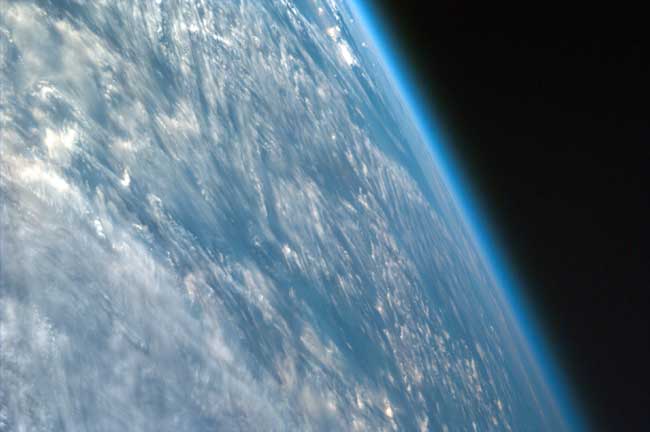Zinc and new hypotheses about the origin of life
The Miller-Urey experiment conducted by chemist Stanley Miller and Harold Urey in 1953 is a classic experiment of the origin of life. Accordingly, the ancient atmosphere of the earth was capable of producing amino acids, the basic compound of life, from inorganic substances.
Now, after 55 years, the two scientists come up with a hypothesis, contributing a new perspective to the debate about the emergence of life on earth.
Armen Mulkidjanian of Osnabrueck University, Germany and Michael Galperin of the US National Institutes of Health published two papers, presented hypotheses and arguments and an article on the Biology Direct website.
The two scientists believe that life on Earth originates from porous photosynthetic structures, like the seabed hydrothermal vents, made up of zinc sulfide (the common name is phosphorus). They argue that under the high pressure of the CO2-dense atmosphere, zinc sulphide structures can appear on the surface of the first continents - where they can catch sunlight. Contrary to many contemporary hypotheses that ultraviolet radiation is an obstacle to developmental life, Mulkidjanian and Galperin think it is useful for life.
 Previously, in Miller and Urey's view, the atmosphere on earth was a reducing environment. However, scientists today believe that our ancient earth has an atmosphere of CO2. (Photo: NASA)
Previously, in Miller and Urey's view, the atmosphere on earth was a reducing environment. However, scientists today believe that our ancient earth has an atmosphere of CO2. (Photo: NASA)
Mulkidjanian, author of the study, said: 'The problem is that you have to find the answer to a series of questions that explain the origin of life. Until now, we have only solved the energy problem for life originating. '
Change the concept of the original atmosphere
According to Mulkidjanian, the debate around whether life came from chemical reactions began to change direction when scientists questioned the atmospheric conditions that Miller and Urey used in their experiments. me In this famous experiment, Miller and Urey replicated the original atmosphere of the earth with a mixture of methane, hydrogen, ammonia and steam. This mixture, along with light rays simulating lightning, led to the formation of amino acids. This allowed Miller and Urey to assume that the original earth had a reducing atmosphere, meaning it contained a large amount of hydrogen and almost no oxygen.
However, many scientists have now dismissed the notion that the original earth's atmosphere is reducing. Instead, they believe that the ancient earth had a neutral atmosphere, primarily composed of CO2 and a small amount of nitrogen and hydrogen - similar to Mars and Venus now. Researchers - including Miller - repeated the experiment
Miller-Urey under other atmospheric conditions.The results show that this new gas mixture does not produce amino acids.
 The new hypothesis suggests that life on earth comes from porous photosynthetic structures, formed by zinc sulfide, like hydrothermal vents. (Photo: Survey Institute, University of Rhode Island, Oceanographic School and Institute of Archeological Oceanography)
The new hypothesis suggests that life on earth comes from porous photosynthetic structures, formed by zinc sulfide, like hydrothermal vents. (Photo: Survey Institute, University of Rhode Island, Oceanographic School and Institute of Archeological Oceanography)
Mulkidjanian said: 'After it was clearly stated that the origin of the earth's atmosphere is from CO2, no hypothesis about the origin of life seems reasonable.'
Creatures can only survive if there is a certain stream of energy - such as solar radiation or chemical reactions.
Mulkidjanian explains : 'If there's an CO2 environment, to create complex compounds, what you need is a source of electrons to reduce this CO2.'
From A-biotic to zinc
Mulkidjanian's 'zinc-world' hypothesis offers another version of the earth's atmosphere, an atmosphere in which zinc sulfide plays an important role in the development of life. In essence, zinc sulfide deposits only at deep-sea hydrothermal vents.
It is the unique ability to store light energy that makes it available in many devices today, from televisions to night lighting devices (zinc sulfide is also used in sunscreens). .
The ability to store light makes zinc sulfide an important element in the debate about the origin of life. According to Mulkidjanian, once exposed to ultraviolet light, zinc sulfide can significantly reduce CO2, like plants.
To test the hypothesis, Mulkidjanian and Galperin analyzed the metal content of modern cells and were surprised to find quite high levels of zinc, especially in the complex of proteins with DNA and RNA molecules.
According to Mulkidjanian, the proteins that are considered to be evolutionary and especially related to the transport of RNA, have a high zinc content.
 While many theories consider UV radiation to be an obstacle to life, Mulkidjanian and Galperin think it is really helpful. (Photo: NASA)
While many theories consider UV radiation to be an obstacle to life, Mulkidjanian and Galperin think it is really helpful. (Photo: NASA)
Scientists say this result is evidence that the first life morphology developed in zinc-rich environments. However, when the authors present this issue in their research, the scientific community believes that in order to receive widespread approval, this new hypothesis requires further, more intensive scientific evidence. differences in describing the nature of life and chemical reactions in zinc-rich environments.
Mulkidjanian said : 'We cannot fully explain the properties of modern organisms unless we understand how life originated.'
For cosmologists, this new hypothesis marks an important step in the debate about the origin of life.
NASA's Max Bernstein, an astrophysicist, said, 'If this hypothesis is accepted, it will represent a real step in people's notions. I cannot say whether this hypothesis will eventually be accepted. However, I hope that many people will want to see empirical evidence of the consistency of chemical reactions and hypothetical models under prebiotic conditions. '
- The benefits of zinc for the body
- Zinc helps children with infections recover quickly
- Inventing liquid zinc batteries can prevent explosion
- The first time the zinc beam was shot at the time the sperm touched the egg
- Zinc can protect children with HIV
- Health and anxiety of zinc deficiency
- Life in the earth comes from Mars
- The ocean is not the place where cell life begins
- Detecting chemicals is thought to form life
- Children with zinc deficiency will stunt and slow up puberty
- 3 types of seafood men should eat to enhance vitality
- Shocking research on the origin of life on Earth
 Is the magnetic North Pole shift dangerous to humanity?
Is the magnetic North Pole shift dangerous to humanity? Washington legalizes the recycling of human bodies into fertilizer
Washington legalizes the recycling of human bodies into fertilizer Lightning stone - the mysterious guest
Lightning stone - the mysterious guest Stunned by the mysterious sunset, strange appearance
Stunned by the mysterious sunset, strange appearance